Negative SEO – Defense Against the Negative Arts
Contents
Negative SEO, what is it? Why is it effective? What can you do about it? I’m your “Defense Against the Negative Arts” teacher. Negative SEO is very real, very effective, and you can defend yourself against it, without Google’s silly “report all your past sins” disavow tool.
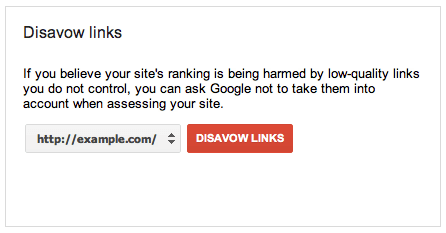
Let me start by saying that in order to teach you how to defend yourself against negative SEO, you must learn how negative SEO works. My goal here is not to teach a bunch of script kiddies how to destroy people’s rankings. Please do not take the information you’re about to learn and use it on other people’s livelihoods. In any event, I’m not the one responsible for Negative SEO — that advent sits squarely in Google’s lap. Burrying your head in the sand and saying “la la la”, and refusing to discuss negative SEO is not an option, because discussion is the only way people can protect themselves from this nasty trick. Without further ado.
The problem with Google’s disavow tool.
I get a kick out of reading mainstream SEO’s recommendations on how to deal with negative SEO. Their take on it, “It’s like, really really hard to negative SEO. It’s rare, it almost never happens. You’re probably confused. You probably brought it upon yourself. However, if you really are getting negative SEOed, just use Google’s disavow tool.” That was a summary of Moz’s 5000+ word article on the subject.
There’s a catch 22 with the disavow tool. They start out thinking you’re guilty. If you read what Google says, you’ll notice things like: Blindly adding all backlinks to the disavow file is not considered a good-faith effort, and will not be enough to make your reconsideration request successful.
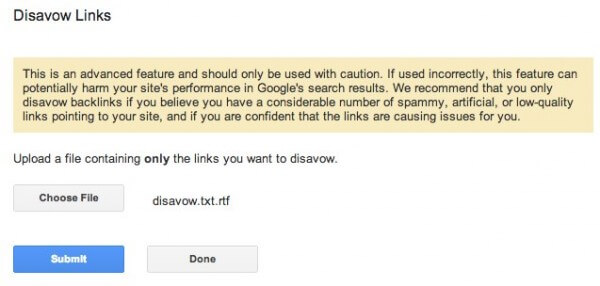
The disavow tool doesn’t work by itself. It is part of a multi-step process. The process begins with submitting your disavow report. The next step is submitting a reconsideration request, groveling for forgiveness and promising you’ll never do such a dastardly thing again, crossing your heart (or your fingers), and hoping the guy or gal who reads it is having a good day.
Reconsideration requests are for manual penalties. Not for algorithmic penalties. When your site disappears from Google after a low quality, high exact match anchor text link blast — you get an algorithmic penalty most of the time. It’s easy to tell — log into webmaster tools. Look under manual actions for webspam. Chances are, you don’t see any actions against your site. If that’s the case, then the disavow tool will not help you at all. I’ve tried it many times, with months passing and no results, so this isn’t guesswork.
Matt Cutts has this to say about reconsideration requests:
… but if something is only affected by our algorithms, and not by any sort of manual action that flagged something that violated our guidelines, then normally you wouldn’t be able to apply against the algorithm, the algorithm would just continue to run. What you would need to do, you would need to change your site so that the algorithms would no longer detect the spam.
What if you’re getting hit by links that other people have arranged so that your site will crash and burn? The problem is that most websites have some kind of fishy links. Maybe you have your own personal blog network. Perhaps you have purchased a link package. As you go through this disavow process — not only are the bad links going to go under a microscope, your own personal blog network, or other link packages you have purchased, will be under scrutiny as well.
Google spam professionals have all the tools necessary to examine your link profile. While they aren’t doing this manually to sites at random, if you submit a reconsideraion request they will. They’ll see all the links you’ve built, and the timeline of when you received the links. They will be going over your link portfolio with a fine tooth comb. Be afraid if you operate a private blog network, or have spammy looking links that you built yourself.
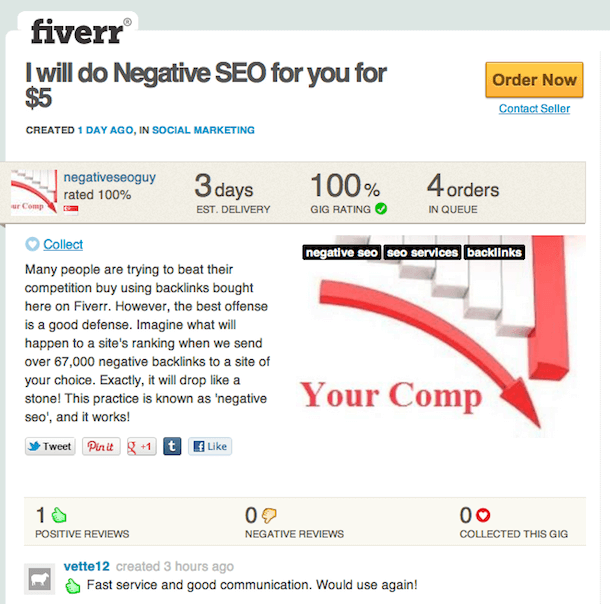
Now, of course, if you are entirely clean — by all means do the link disavow. Do the reconsideration request. This will last you until that jerk buys another $5 fiverr link package. You then go through the enire process, only to learn that Google can’t fix it, because it is an algorithm applied penalty and not a manual action.
It’s a huge pain in the neck to deal with negative SEO. Fortunately, there is a solution! And it doesn’t involve asking for Google’s forgiveness. You were dinged by Google’s algorithm, and we will work with Google’s algorithm to get undinged.
How Negative SEO Works
It’s been since 2011, over four years now, that building exact links to your website will form a metaphorical mushroom cloud over your Google rankings. I’m not going to be condescending and pretend that everyone doesn’t know what makes a website’s rankings fail. Any SEO worth their salt has plenty of negative SEO experience, having inadvertently destroyed their own rankings, with low quality links and too-high exact match anchors. Negative SEO is not any different, it’s just when someone does it to another person’s website as opposed to their own, with the purpose of making it take a nose dive.
When you see Google say something like they’ve built in protection against this happening, lets not pretend they’re magic. How do they know who purchased a link package? One theory is they could chart out previous linking vs a one-time ordeal that happened for a short duration. So then, when a negative SEO scoundrel invests a second $5 and buys another fiverr package a week later, Google’s built-in defense is foiled. Not yet? 3 weeks and $15. Not yet? 4 weeks and $20. Rinse and repeat until the site is gone. The investment is so small, and the potential profits are so high, that negative SEO is extremely prevalent.
Protect Yourself from Negative SEO
I can remove negative SEO penalties. I’m going to show you how to do it, too. I’ve been involved in some pretty competitive niches, and in some the negative SEO starts kicking in when you show up in the 20s. Then there’s all that negative SEO I did to myself unwittingly, that I learned to correct.
There are several methods to fixing negative SEO. The first is very quick (adjusting your on-page keyword density). The next is slower (dilute your incoming links with new links that aren’t exact-match anchors). Finally, you will continue doing everything necessary to build a decent website, including gathering social signals, continue adding pages, doing everything you can to send many quality signals to Google. Google is less likely to penalize a website, unless there is many things fishy going on. As a last step, we’ll make sure your site isn’t “fishy”.
Someone is bombing your site with links! What do you do? The first question is, what type of links? If they’re very clever, they’re hitting you with exact match keywords for the things you actually want to rank for. This will be harder to deal with. Perhaps they’re hitting you with porn-type anchors, which isn’t as big of a concern.
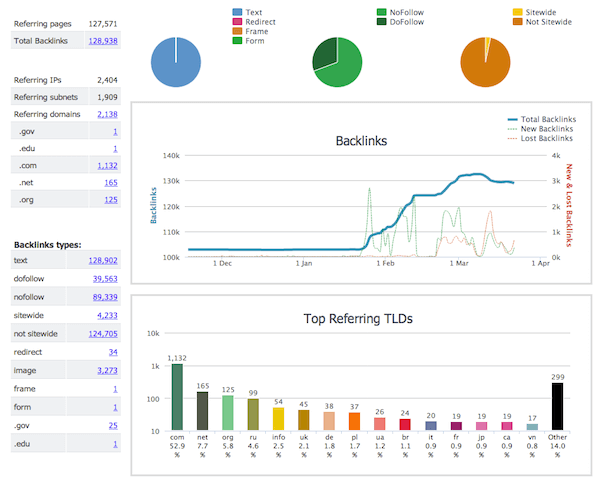
Exact match anchors means you’re dealing with low quality links and over-optimizing your keyword balance. The reason that low quality links hurt so bad is they will eventually disappear, resulting in link rot. Link rot is what eventually destroys churn-and-burn operations, where they accumulate tens of thousands of links that quickly disappear, which results in the “burn”. The exact match links that remain will always be there, creating a very high optimization multiplier against your on-page content.
The remedy is to greatly reduce your on-page keyword density. If you were ranking fine at 1% keyword density, and suddenly you find yourself deluged with tens of thousands of exact match links, by reducing the density you can balance the page, and it will again begin ranking. You may experience a larger volume of Google dances, and whatever benefit the new links bring, there is also the detriment of the link rot, but if you keep adjusting the keyword density, you can continue balancing the page. Begin by bringing it down to .7%, and wait a week. If that sees some improvement, but not a complete restoration, lower it even more, .5%, or .3%.
Next, begin building quality links to the site. Never again use that exact match anchor. Simply build branding links, or “click here” types of links. Over time, as those incoming exact anchors become diluted, your rankings will stablize with less Google dances.
What if you were getting hit with porn links? Then you’re only dealing with link rot. Though it will sting when those links start disappearing, this is not a permanent situation, and when the dust settles your rankings should recover almost as they were. I say “almost”, because your incoming link densities, while not over-optimizing, are still different. Your exact match anchors are now a lower percentage of your total links. Your branded anchors are now a lower percentage of your total links. You should continue building links, branded anchors (with a few exacts mixed in) in order to stablize your rankings.
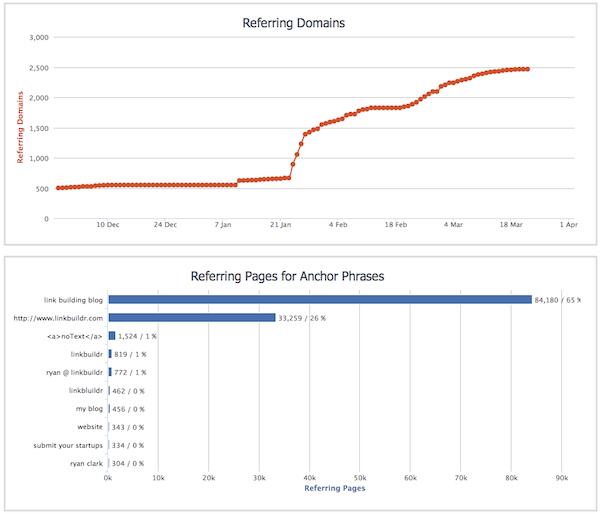
Finally, (whether hit by exact anchors, or porn links), continue building quality signals to your site, such as social signals. Google is less inclined to penalize a website unless multiple things seem off. You have 40k links to your site, but not even one social share? That is quite odd, wouldn’t you say? 99% of the links to your website are from WordPress blogs? That is quite odd, wouldn’t you say? Google says there are over 200 things they consider for your rankings, and there are multiple things like this that don’t add up. A site popular enough to receive 40k backlinks is a site popular enough to receive x amount of facebook shares, x amount of twitter tweets, x amount of links from reddit, etc. Duplicate link profiles of competitor sites. By covering all your bases, you show Google that you aren’t trying to manipulate your rankings.
Whether someone did negative SEO to you, or you inadvertently did it to yourself, the above guide should see your former rankings restored. On the next page, we take a look at how to manage your site’s on-page SEO in a practical manner.

Comments